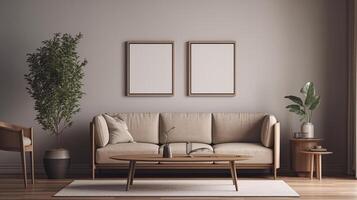In today’s fast-paced world, living spaces must do more than just look good—they must adapt, respond, and evolve. Enter Contemporary Comfort Mipimprov, a rising design principle that champions simplicity, adaptability, and ease without sacrificing elegance. At its core, it’s a lifestyle mindset molded into architecture and interior spaces, aiming to provide both physical and emotional satisfaction.
What is Contemporary Comfort Mipimprov?
Contemporary Comfort Mipimprov is not just a trend. It’s a modern approach to how we live, organize, and experience our surroundings. The term combines three core ideas:
- Contemporary Comfort: A focus on present-day aesthetics with calming, inviting spaces.
- Mip: A conceptual reference to minimal impact planning—designs that reduce clutter and prioritize usefulness.
- Improv: Short for improvisation, highlighting spontaneous design decisions and flexibility within the living environment.
Together, these ideas form a practical and forward-looking way of shaping environments that promote well-being and fluidity.
Origins of the Concept
While minimalism and Scandinavian influences have shaped modern interiors for decades, Contemporary Comfort Mipimprov was born out of a deeper need to create adaptable, real-life spaces. Rather than following rigid rules, this approach encourages creativity through functionality. It emerged from people rethinking how they use space—especially during times when home became a workspace, a gym, a classroom, and a sanctuary.
The Key Principles of Mipimprov Design
1. Simplicity That Serves
Every design choice in contemporary comfort mipimprov has a purpose. There are no unnecessary elements. From a sofa that doubles as a guest bed to a desk that folds into the wall, every piece must contribute meaningfully to the environment.
2. Visual Calmness
This design style embraces clean lines, muted tones, and uncluttered arrangements. Soft lighting, subtle textures, and intentional spacing create a calming mood. The result? A home or space that encourages rest, thought, and creativity.
3. Adaptive Layouts
Mipimprov values improvisation. Instead of fixed room functions, spaces can transform throughout the day. A living room can host a morning workout, serve as an office in the afternoon, and become a cozy family spot by evening.
4. Multifunctional Furniture
One hallmark of this approach is furniture that adapts. Chairs with hidden storage, modular shelves, convertible tables—each item is chosen not just for style, but for how it contributes to fluid, everyday use.
5. Low Impact Materials
Environmental consciousness plays a role. Designers who follow Contemporary Comfort Mipimprov often use recycled, reclaimed, or renewable materials. The goal is sustainability without sacrificing aesthetic quality.
Why Contemporary Comfort Mipimprov Matters Now
The global shift toward remote work and digital lifestyles means our homes must accommodate more than ever. Traditional room labels are fading. Kitchens are doubling as Zoom studios. Bedrooms are evolving into yoga spaces. Contemporary comfort mipimprov responds to this change by encouraging:
- Function-first designs
- Organic transitions between spaces
- Creative freedom over rigid formality
In essence, it’s not about creating a magazine-worthy space, but one that reflects the rhythm of real life.
How to Apply Mipimprov at Home
You don’t need a complete overhaul to embrace this design idea. Here are some easy ways to incorporate contemporary comfort mipimprov into your living space:
Start With Decluttering
Remove what doesn’t serve you. Begin with one area—a table, a corner, or a shelf. Ask: Is this item useful, beautiful, or comforting? If not, it’s time to let it go.
Introduce Flexible Elements
Add items that adapt with your routine. A rolling cart that shifts from kitchen helper to office storage. A pouf that functions as seating or a table. The more ways you can use something, the better.
Embrace Neutral Foundations
Use calming tones as your base: creams, beiges, muted greens, or soft grays. Let texture—like woven fabrics, matte metals, or soft woods—add depth.
Create Zones
Even in a small apartment, zoning is key. Use rugs, lighting, or plants to divide areas by function rather than walls. One space can host multiple activities when thoughtfully arranged.
Common Mistakes to Avoid
Many people misunderstand contemporary comfort mipimprov and end up making these common errors:
- Over-minimalizing: A sterile space is not the goal. Comfort should never be sacrificed for bare surfaces.
- Ignoring function: A beautiful object is useless if it doesn’t meet your daily needs.
- Over-decorating: Remember, mipimprov prioritizes improvisational function, not ornamentation.
Balance is essential—strive for pieces that are meaningful, movable, and multi-use.
The Emotional Side of Mipimprov
This design style goes beyond appearance. It offers emotional clarity. By reducing clutter and choosing intentional pieces, you create a space that allows you to breathe, think, and rest. It’s a silent supporter of your daily life, working with you, not against you.
In a way, Contemporary Comfort Mipimprov encourages mindfulness. When your space flows with your needs, there’s less friction. Less effort is spent managing your surroundings, and more is available for living fully.
Future of the Mipimprov Movement
Design is always evolving, but this particular approach seems here to stay. With urban spaces shrinking and digital demands increasing, the call for smarter, adaptive design is louder than ever.
Architects, product designers, and lifestyle brands are beginning to incorporate mipimprov thinking into their offerings. From collapsible walls to AI-assisted furniture placement, the future of interior design is becoming more intuitive, interactive, and person-centered.
Final Thoughts
Contemporary Comfort Mipimprov is more than just an aesthetic. It’s a design culture—a mindset—that empowers you to live better through spaces that evolve with you. Whether you’re furnishing a new apartment or reimagining a single room, the heart of this philosophy remains the same: live simply, live comfortably, and let your space adapt to you.
